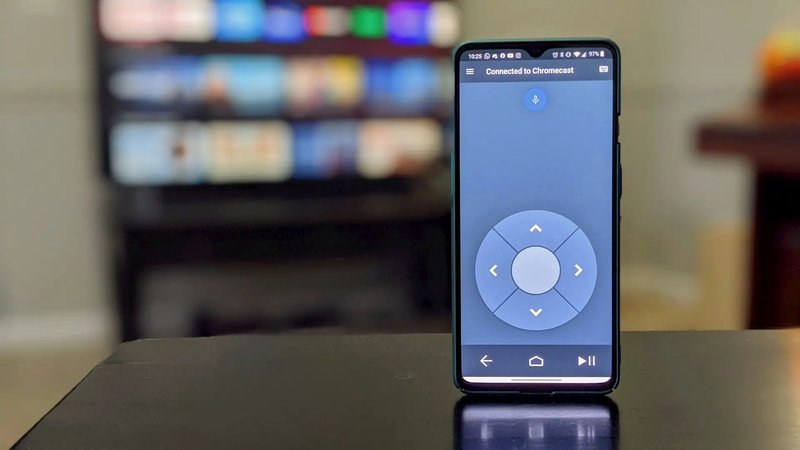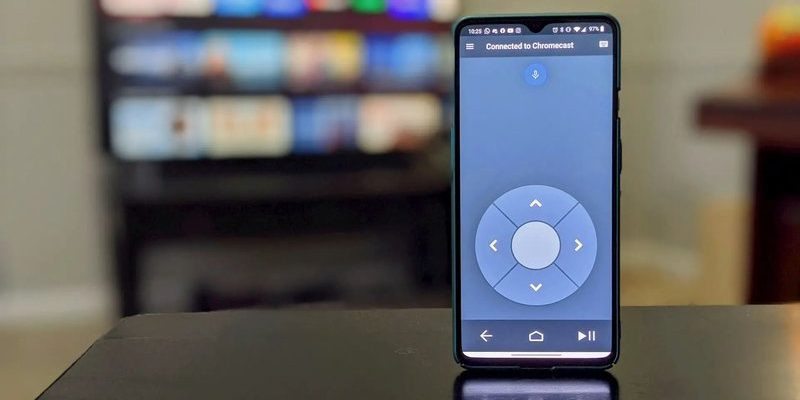
This isn’t some high-tech hack or nerdy workaround, either. Google designed these remotes so regular people (like you and me) wouldn’t get stuck in setup hell. But still, the process can feel a bit like learning to ride a bike—wobbly at first, but then it clicks and you wonder why it ever felt tricky. So, if you’re a beginner feeling overwhelmed or just plain annoyed at the idea of “remote codes,” hang tight. I’m here to break down what’s really happening, how to use the Chromecast remote without a code, and answer the why’s and what-if’s you’re probably already thinking about.
What Actually Is a Chromecast Remote?
Let’s start super simple. The Chromecast with Google TV comes with a small, curved remote that feels kind of nice in your hand—almost like a river stone that’s been shaped by water over years. This *isn’t* your average universal remote. It’s built for your Chromecast streaming device, designed to make flipping through Netflix or YouTube as easy as scrolling on your phone.
Now, if you’re picturing those old-school TV remotes with a million buttons, relax. Chromecast remotes are pretty minimal. You’ve got your usual suspects—volume, input, power, and a circular D-pad (think: a tiny steering wheel for your TV life). There’s also a Google Assistant button if you ever feel chatty with your TV. So, unlike universal remotes that bark at every device in your living room, *this* remote is all about Chromecast and the TV it’s connected to. That’s why code pairing isn’t usually a part of the process.
Why Some Remotes Ask for Codes (and Why Chromecast Usually Doesn’t)
Here’s the thing: codes exist mainly because of universal remotes. Those old remotes needed to speak a special language to every unique TV, soundbar, or DVD player. You’d end up scrolling through code lists as long as a CVS receipt, hoping to stumble on the right one so your remote could turn on your device. Fun, right? Not really.
But Google Chromecast remotes work differently. Since they’re made to control *just* your Chromecast (and, optionally, your TV’s basic functions), they use a process called *automatic pairing*. The remote and Chromecast device already “know” how to talk to each other out of the box. It’s like getting wireless earbuds that pair instantly when you open the case—no code, no fuss.
Once in a blue moon, you might see a prompt for a code if your Chromecast is trying to control your TV’s power or volume. But for the vast majority of folks, *setting up the Chromecast remote doesn’t involve a code at all*. You just sync, and you’re good to go.
How Does Chromecast Remote Pairing Work Without a Code?
You might be wondering, “If I don’t need a code, how does the remote connect?” Think of the Chromecast remote as your TV’s friendly neighbor: it knows the Wi-Fi password already. Once you power up your Chromecast device and put batteries in the remote, the two start chatting automatically via Bluetooth.
Here’s how it looks in real life:
- Plug Chromecast into your TV and power it up.
- Pop the batteries into the Chromecast remote—you should see a light blink, which means it’s alive and searching for a friend (your Chromecast).
- The Chromecast device recognizes the signal from the remote and “pairs” itself, kind of like a first handshake.
- You’ll see setup instructions on your TV screen, but there’s no mention of codes. If you follow the prompts, everything should just… work.
If you’re ever asked to pair the remote again (say the batteries died, or you factory reset the device), the process is still code-free. Push and hold the pairing button on the back of the remote until the light flashes. The Chromecast will detect the signal and re-link—no secret code needed.
Pro tip: The only “code” you might see is a simple confirmation number on the TV during the very first Chromecast app setup, just to make sure you’re not accidentally connecting to your neighbor’s device. That’s it—nothing you have to enter on the remote itself.
Setting Up Your Chromecast Remote Without a Code: Step-By-Step
Here’s where the rubber meets the road: the exact steps to make your Chromecast remote work without ever touching a code.
- First, plug your Chromecast into the HDMI port on your TV and connect it to power.
- Turn on your TV and select the correct HDMI input.
- Insert new batteries into your Chromecast remote.
- Your TV should display a setup screen. If you see an animation or blinking light on your remote, that’s a good sign—it’s trying to pair.
- Follow the on-screen prompts. Usually, the TV asks you to press certain buttons on the remote to confirm it works (like pressing the D-pad or volume buttons).
If everything goes smoothly, the Chromecast streaming device remote will just start working. No code needed. If you hit a snag (like, the remote isn’t responding), sometimes a quick battery swap or moving closer to the device does the trick.
Here’s an example: My friend Sarah got stuck at the pairing screen because her remote’s batteries had rolled under the couch. She wasted an hour looking for a “Chromecast pairing code” online before realizing all she needed was *fresher batteries.* Don’t be like Sarah.
What If the Chromecast Remote Won’t Pair Automatically?
Here’s where things can get mildly annoying, but no worries—most issues are totally fixable. Sometimes, your Chromecast remote refuses to pair automatically. Maybe you pressed the wrong button, or maybe there’s a rogue Bluetooth device nearby creating interference.
In those cases:
- Hold down the pairing button on the back of your Chromecast remote until the LED flashes. This puts the remote into pairing mode.
- On the TV, the Chromecast setup menu should detect the remote and confirm syncing. Still, no code required.
- If it doesn’t work, try restarting your Chromecast device by unplugging it from power for about 30 seconds.
- Make sure your remote’s batteries aren’t dead. It sounds obvious, but low batteries can make the remote act possessed.
If, after all that, you haven’t had any luck, a full Chromecast reset can sometimes “unstick” the whole process. Just hold down the button on your Chromecast device until the light turns white, then start from scratch.
Honestly, the only time I ever had to hunt for a code was when I tried using a random universal remote from 2004. Don’t bother—just stick with the Chromecast remote unless you love pain.
When (If Ever) Do You Need a Code With Chromecast Remotes?
This is where a lot of people get tripped up. For the main Chromecast remote, *you almost never need a code.* Period. The only semi-exception is if you want your Chromecast remote to control your TV’s volume or power. Some TV models use a slightly different infrared (IR) language, so the setup process on your TV screen might ask you a few questions—like “Did your TV turn off?” after you press a button.
If your TV’s brand is weirdly old or obscure, Chromecast might test a couple IR signals and ask for feedback, but you’ll never have to type in a long string of numbers.
So to recap: regular Chromecast streaming and menu navigation? No code. Teaching the remote to change your TV’s volume or turn it off? Still no traditional code—just a couple yes/no questions during setup.
Universal Remotes vs Chromecast Remotes: Why It Matters
Let me explain why universal remotes are so hung up on codes, and why the Chromecast remote is refreshingly simple. Universal remotes try to control every device under your roof: TV, soundbar, Blu-ray, maybe even your old VCR if you’re a true vintage soul. That’s a lot of languages to speak! So, they use “codes” to translate between brands and models.
The Chromecast remote is a specialist, not a generalist. It only needs to talk to one streaming device and, optionally, your TV’s power and volume. So Google built in automatic pairing, using Bluetooth and IR, so you don’t have to memorize or look up codes every time you add a new device.
If you ever *lose* your Chromecast remote and have to replace it, just get an official replacement. It’ll pair as easily as the original—no codes, no drama. Universal remotes can work, but you’ll almost always need to fish for codes and hope for the best.
Chromecast Remote Troubleshooting Tips (No Code Required!)
Stuff happens. Maybe your Chromecast remote stops responding, goes out of sync, or just plain dies. Here’s how to get things back on track—still without a code.
- Check the batteries. It’s wild how many problems are just dead batteries. Fresh batteries can revive even the most stubborn remote.
- Re-pair the remote. Hold the pairing button on the back of the remote for about five seconds until the LED light flashes, then wait for your Chromecast device to say hello.
- Restart the Chromecast device. Unplug it from power, wait, and plug it back in. Sometimes electronics just need a nap.
- Factory reset if all else fails. Hold the button on the Chromecast device itself for about 25 seconds. This will erase everything, but it can “unstick” pairing issues.
If you’re still stuck, grab your phone and use the Google Home app as a virtual remote. It’s not quite as satisfying as clicking a real button, but it’s great in a pinch.
Final Thoughts: No Code, No Stress—Just Streaming
So, are you still stressed about finding a “Chromecast remote code”? Don’t be. Google made the whole process easy enough for anyone, code or no code. As long as you’ve got your Chromecast plugged in, your remote has batteries, and you’re patient with setup, you shouldn’t need to touch a code at all. If you hit a problem, usually a fresh set of batteries, a quick reset, or using the Google Home app as a backup will have you back on track.
Honestly, once you’ve gone code-free, you’ll wonder why all remotes don’t work this way. No cheat sheets. No “Did my TV just turn off?” panic. Just you, your remote, and whatever you want to watch next.
If you ever have a story where your Chromecast remote *did* ask for a code, let me know—I’d love to hear it, because by design, you’re not supposed to need one. Happy streaming!
